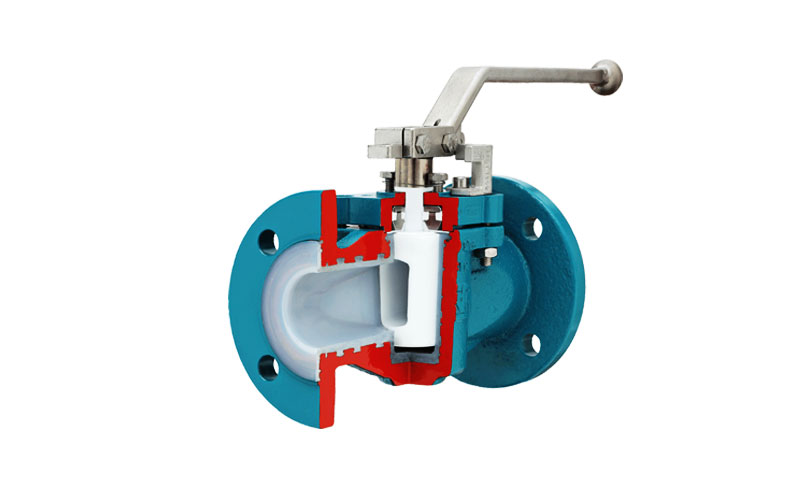1. 導入
プラグバルブ 絶縁用に広く使用されている汎用性の高い 1/4 回転バルブです, 流用, 産業用システムにおける時折のスロットリング.
円筒形または円錐形のプラグがバルブ本体内で回転するというシンプルな設計により、高速な動作が可能です。, 低圧力降下, 堅牢な信頼性.
その原則を理解する, 材料, パフォーマンスメトリック, 産業用途では、高圧に適したバルブを選択することが不可欠です。, 研磨剤, またはスペースに制約のあるサービス.
2. プラグバルブとは?
a プラグバルブ 工業用配管システムで流れを遮断するために広く使用されている特殊な 4 分の 1 回転ロータリー バルブです。, 流用, そして時折のスロットリング.
核となる動作原理は、 円筒形または円錐形のプラグ バルブ本体内に収納, これは回転して内部ポートをパイプラインに合わせて無制限の流れを実現するか、通路を完全に遮断します。.
このシンプルかつ堅牢なメカニズムにより、迅速な 90° 動作が可能になります。, 重要なアプリケーションにおいて効率と信頼性の両方を提供します.
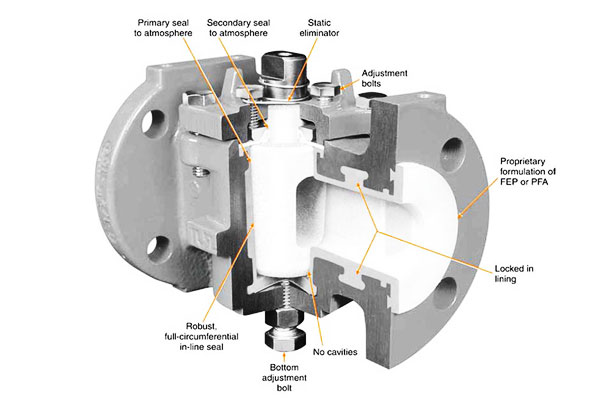
コア機能
- 4分の1回転動作
高速作動 (通常90°) — 緊急隔離に最適, ダイバータ業務および素早いオン/オフ動作が必要なアプリケーション. - 単純, 障害物の少ない流路
フルポート構成により、圧力降下を最小限に抑えながら、実質的にパイプボア流量を提供します; ポート数を減らしたオプションは、流量容量と引き換えにトルクとコストを低減します. - 複数のポート構成
二-, 三つ- 4 方向プラグ配置により転用が可能, 混合, 複数のバルブを使用しないサンプリングと複雑なルーティング. - シーリングの多様性
で利用可能 金属対金属 高温/研磨作業用シート, 回復力 (PTFE/RPTFE, エラストマー) 気泡のない遮断と低トルクを実現するシート, または 潤滑された 汚れた媒体や浸食性媒体の中でシートの寿命を延ばすシステム.
3. プラグバルブの設計による分類
プラグバルブは次のように分類されます。 機械設計, シーリング方法, とフロー構成.
これらの分類を理解することは、エンジニアが圧力に適したバルブを選択するのに役立ちます, 温度, 流れ, およびサービス要件.
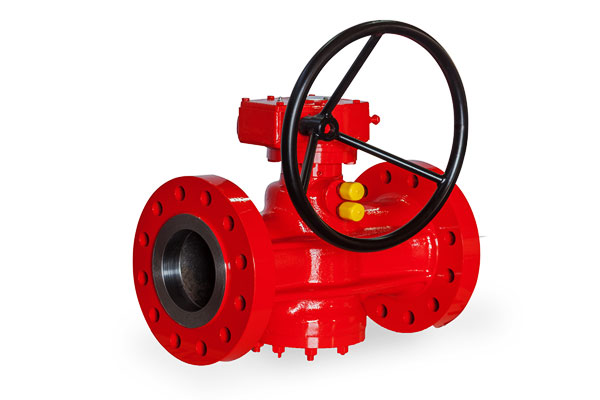
プラグタイプに基づく
| タイプ | 説明 | 利点 | 典型的なアプリケーション |
| 円筒プラグバルブ | 真っ直ぐな円筒形のプラグが一致する体腔内で回転します; 最もシンプルなデザイン. | コンパクト, 費用対効果, 低圧力降下. | 水, ガス, 低圧化学ライン. |
| 円錐形 (テーパード) プラグバルブ | 円錐形のプラグが本体に食い込み、密閉性が高まります。. | 優れたシール性; より高い圧力と温度に対応します. | 石油化学, 油 & ガス, 蒸気ライン. |
ポート構成に基づく
| ポートの種類 | 説明 | 利点 | 典型的なアプリケーション |
| ポート経由 (フルポート) | ポートはパイプラインの直径と一致します; まっすぐに流れる流路. | 最小限の圧力損失; 高流量容量. | バルク流体輸送, パイプライン, スラリーの取り扱い. |
| 縮小ポート | 配管口径より小さいポート. | 作動トルクの低減; 費用対効果の高い. | 中流量システム, 計器ライン. |
| マルチポート (三つ- または 4 方向) | 流れの変更を可能にする, 混合, または複数のポートを介してサンプリングする. | 複数のバルブを交換します; 柔軟なルーティング. | サンプリング, 迂回任務, 化学反応器. |
プラグサポートに基づく
| サポートタイプ | 説明 | 利点 | 制限 |
| フローティングプラグ | プラグは座席の間にあり、自由に回転します. | 自動調心; シンプルな構造. | 大型サイズの高トルク; 限定された高圧使用. |
| トラニオン形プラグ | プラグは上部および/または下部ベアリングで固定されています. | 操作トルクの低減; 高圧または大型用途でも安定. | より複雑なデザイン; 製造コストの増加. |
シーリング設計に基づく
シート寿命の延長; 汚れた液体や浸食性の液体でもスムーズな動作.
定期メンテナンス; 衛生的な用途には理想的ではありません.
ライマーシートはしっかりとした密閉性を提供します.
| シールタイプ | 説明 | 利点 | 制限 |
| 金属対金属 | プラグに直接接触するハードシート. | 高温, 高圧, 研磨サービス. | より高いトルクが必要; 潤滑なしではかじりの可能性がある. |
| 弾力のあるシート (PTFE, rptfe)
</た> |
エラストマーまたはポー | 低トルク; 気泡のないシャットオフ; 耐薬品性. | 限られた温度範囲; 攻撃的なメディアによる劣化の可能性. |
| ルブル |
4. プラグバルブの主な構成部品と材質
プラグバルブの性能, 耐久性, 特定の用途への適合性はその用途に依存します。 部品と材料.
各部品は圧力に耐えるように設計されています, 温度, 腐食, スムーズな動作と漏れのないシールを確保しながら、侵食を防止します.
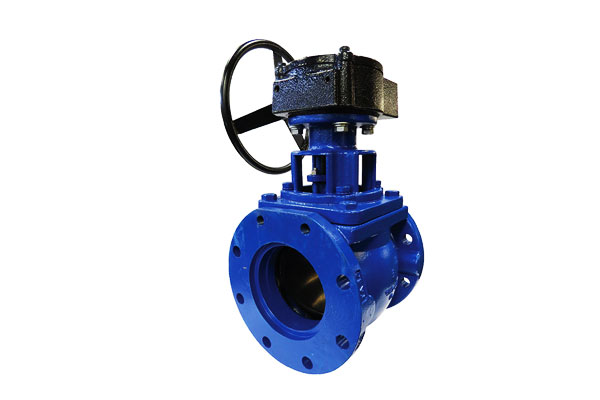
主要コンポーネント
| 成分 | 説明 | 関数 |
| バルブ本体 | プラグとポートを含む外部ハウジング. | 圧力荷重をサポート, 流路を提供します, そしてパイプラインに接続します. |
| プラグ | 1 つ以上のポートを備えた円筒形または円錐形の回転要素. | ポートを調整またはブロックすることでフローを制御します(s); 主要なフロー制御要素. |
| 座席 | プラグが密閉される金属または弾性表面. | 気泡のない遮断を保証し、長期にわたる密閉性を維持します。. |
| 幹 / ハンドル | プラグを回転させるために使用されるシャフトまたはレバー. | 手動または自動アクチュエータからプラグにトルクを伝達します. |
| 潤滑剤チャンバー (オプション) | プラグとボディの間のリザーバーには潤滑剤が充填されています (潤滑プラグバルブ用). | 摩擦を軽減します, シートの寿命を延ばします, かじりや腐食を防ぎます. |
| ベアリング / トラニオン (トラニオン取付プラグ用) | プラグの上部および/または下部のサポート. | 大型バルブや高圧バルブの作動トルクを軽減し、プラグを安定させます。. |
| 腺 / パッキング | ステムまたはハンドル境界面の周囲のシール要素. | ステム/ハンドルに沿った漏れを防ぎます。; スムーズな回転を可能にします. |
材料の選択
| 成分 | 典型的な資料 | キープロパティ |
| 体 & ボンネット | 炭素鋼 (A216 WCB), ステンレス鋼 (304, 316), 二重, 合金 20, ニッケル合金 | 強さ, 耐食性, 温度耐性 |
| プラグ | ボディと同じかハードフェイス (ステリテ, トイレオーバーレイ) | 耐摩耗性, 寸法安定性, 化学互換性 |
| 座席 | 金属 (ステリテ, モネル), PTFE/RPTFE, UHMWPE | 密閉性, 耐薬品性, 低摩擦 |
| 幹 / ハンドル | ステンレス鋼, 合金鋼 | 強さ, ねじり剛性, 耐食性 |
| 潤滑剤 | 鉱物油, 合成グリース, またはFDA承認の潤滑剤 | 摩擦を軽減し、潤滑バルブの腐食を防ぎます。 |
5. 流量特性と油圧挙動

流量能力 (cv) — 一般的な範囲
- 小型機器サイズのプラグバルブ (1/4 – 1) 持っているかもしれない Cv ~ 0.1 ~ 5.
- 一般的なプロセスサイズ (2–6) 通常は範囲 Cv ~ 5–200 ポートの設計に応じて (フルポート vs. 削減されたポート).
- 大口径プラグバルブ (8+) 非常に高い Cv 値を達成できる, ボールバルブに匹敵し、多くの場合、同じサイズのグローブバルブを上回ります.
圧力降下とスロットリング
- プラグバルブは主に以下のために設計されています。 オン/オフ または ダイバーター サービス.
スロットリングに使用できる一方で、, 彼らです あまり理想的ではない 高いΔPで絞り込まれた場合、非線形の流量特性とシートの磨耗が生じる可能性があるため、正確な調整が可能なグローブバルブよりも優れています。. - 圧力損失は流量に応じて増加し、ポートサイズに応じて減少します; 高ΔPサービスには特別なトリムが必要です (多段プラグまたは減圧プラグ) 騒音や浸食を避けるため.
6. パフォーマンスのメトリクスとクラス
| メトリック | 典型的な懸念事項 / 範囲 |
| 圧力クラス | ANSI 150 ~ 2500 共通; 鍛造デザインでより高い |
| 温度範囲 | 極低温 (適切な材料を使って) 一般的な合金で最大約 400 ~ 600 °C; 特殊合金で航続距離を延長 |
| 漏れ | 金属シート: 漏れは少ないが、すべての場合において気泡密ではない; 弾力のあるシート: 気泡が入らない (実質的に漏れがゼロ) |
| サイクル寿命 | 潤滑金属シート: クリーンなサービスで長寿命; 弾力のあるシート: 数千から数万サイクル |
| 逃亡放出 | ジャバラで緩和する, ライブロード梱包, および準拠したステムシール |
| 規格 & テスト | シェル/シートの圧力試験, シート漏れ試験, 重要な部品のNDT (X線撮影, MPI) |
7. プラグバルブの製造工程
プラグバルブの製造には精密な検査が必要です。 鋳造, 機械加工, 組み立て, そしてテスト 耐久性を確保するために, 漏れのないシール, さまざまな産業条件下でも信頼性の高い動作を実現.

ボディとプラグの鋳造または鍛造
バルブ 本体とプラグ プラグバルブの構造コアを形成します. それらは次の方法で生成できます。:
- 砂鋳造: 中型共通- 大型バルブまで. 複雑な形状に柔軟性を提供, マルチポートボディを含む, トラニオンサポートなどの組み込み機能も可能.
鋳造後の熱処理により残留応力を低減. - インベストメント鋳造 (失われたワックス): 優れた寸法精度と滑らかな表面を実現, 公差が厳しい精密バルブや小型バルブに最適.
- 鍛造: 密なものを生成します, 高圧または重要な用途向けの高強度コンポーネント. 鍛造バルブはボイドが少なく、耐疲労性に優れています, API 6D パイプライン標準に適しています.
精密加工
鋳造または鍛造後, コンポーネントが受ける CNC および手動機械加工 正確な公差と滑らかな表面仕上げを実現します。:
- プラグの穴あけと研削: シートに対する密閉性を維持しながら、プラグが自由に回転することを保証します。.
- シート加工: 金属または弾性シートはミクロンレベルの公差で機械加工されており、気泡の侵入を確実に防ぎます。.
- ポートの調整: 正しい流路を保証し、圧力降下を最小限に抑えるためにマルチポートバルブにとって重要.
- 表面仕上げ: ラッピング, 研磨, またはホーニングにより摩擦が軽減されます, かじりを防ぎます, 長期的なシール信頼性を向上させます.
硬化肉盛とコーティング
耐久性を高めるために 研磨剤, 浸食性の, または腐食性媒体, プラグとシートが壊れている可能性があります:
- 厳しい顔 と ステリテ, タングステンカーバイド, またはニッケル基合金, 耐摩耗性の向上と耐用年数の延長.
- コーティングされた PTFEなどの耐食層付き, ニッケルメッキ, またはエポキシ.
- 潤滑済み 低トルク動作を維持するために特殊なバルブを使用, かじりを防ぐ, シールの寿命を延ばします, 特に高圧スラリー用途において.
組み立てと取り付け
組み立ては正確な作業を保証する精密な作業です。 アライメント, スムーズな作動, シールの完全性:
- プラグの挿入: 丁寧に本体に装着; 必要に応じて潤滑します.
- ステムとトラニオンの取り付け: ベアリングとトラニオンサポートが取り付けられており、操作トルクを軽減し、高圧下でも大型プラグを安定させます。.
- パッキンとグランドの調整: スムーズな回転を確保しながらステムに沿った漏れを防ぎます。.
- シールとシートの検証: 金属製または弾性シートが正しく圧縮されているかどうかをチェックします, アライメント, そして面接触.
テストと品質管理
すべてのプラグバルブは、次の条件を満たすために厳格なテストを受けています。 API, ISO, および ASTM 規格:
- 静水圧試験および空気圧試験: 定格使用圧力と最大許容圧力の下で本体とシートの完全性を検証します。.
- シート漏れ試験: ISOに従って気泡が密閉されていることを確認します 5208 またはAPI 598.
- 寸法検証: CNC三次元測定機 (CMM) 設計仕様への適合を保証する.
- 動作トルク測定: 無理な力を加えずにスムーズな回転を実現, 自動または遠隔作動のバルブにとって重要.
- 非破壊検査 (NDT): 浸透染料などの技術, 磁気粒子, または超音波検査で微小亀裂を検出, 気孔率, または鋳造欠陥.
8. 利点と制限
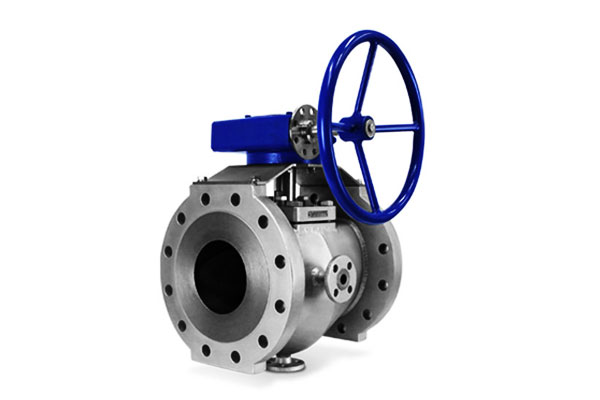
プラグバルブの主な利点
- 耐研磨液性: タングステンカーバイドシートを備えた偏心プラグは長持ちします 300% 採掘スラリーのボールバルブよりも長い (Mining Engineering Journal による).
- 低圧降下: 全開プラグバルブは、ポンプのエネルギー使用量を 10 ~ 15% 削減します。. グローブバルブ (EPA エネルギースターのデータ).
- 高速動作: 4分の1回転デザイン (0.5自動バルブの場合は -2 秒) – 緊急シャットダウンに重要 (例えば。, 油井の噴出).
- 多用途性: 液体を扱う, ガス, -196°C ~ 815°C のスラリー – 複数のプロセス ストリームに 1 つのバルブ タイプで対応.
- リークタイトパフォーマンス: ソフトシートバルブによりクラス VI の漏れを実現 (≤0.00001%) – 高価で有毒な液体の損失を防ぎます.
プラグバルブの限界
- 高トルク要件: 無潤滑の金属シートバルブはボールバルブよりも 2 ~ 3 倍のトルクを必要とします – 大型のバルブには高価な空圧/油圧アクチュエータが必要です.
- メンテナンスのニーズ: 潤滑バルブには四半期に一度のグリース注入が必要 – メンテナンスを怠るとプラグの固着が発生します (ダウンタイムはインシデントごとに 4 ~ 8 時間).
- 高温限界: ソフトシート (PTFE) 260°C を超えると劣化します – 低温での使用に限定されます (例えば。, 食品加工).
- 料金: 偏心高性能プラグ バルブのコストはボール バルブより 20 ~ 50% 高く、過酷な条件にのみ正当化されます。.
- 大きな固体を含むスラリー: マルチポートプラグと円筒形プラグが固形物で詰まる >5 mm – ストレーナまたは偏心設計が必要.
9. プラグバルブの応用
プラグバルブは、他のバルブが故障する過酷な産業環境でも優れた性能を発揮します。.
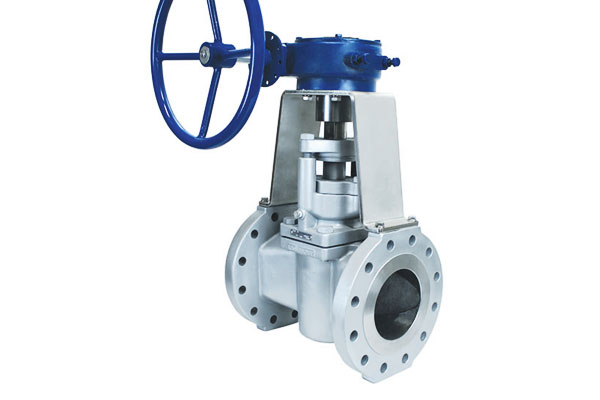
以下は主要なセクターとユースケースです:
油 & ガス
- 上流 (坑口): API 6A 潤滑プラグバルブ (1000 バー, 350°C) 原油とサワーガスを規制 – NACE MR0175 準拠により H₂S 腐食に耐性.
- 中流 (パイプライン): 偏心プラグバルブ (6D火) 天然ガスのブロックバルブとして機能します (最大流量 10,000 m3/h) – 圧力損失が低いため、コンプレッサーのエネルギー使用量が削減されます.
- 下流 (製油所): 金属シートのプラグバルブは重油とアスファルトを処理します (400°C) – 炭化タングステンプラグはコークス粒子の磨耗に耐えます.
水と廃水の処理
- 汚泥の処理: 偏心プラグバルブ (ソフトシート, クラスVI) 固形分 20 ~ 30% のスラッジを処理 – 詰まりなし, 60% ボールバルブよりダウンタイムが少ない.
- 化学物質の投与: 無給油プラグバルブ (PTFEシート) 塩素/フッ化物の投与量を制御 – クラス VI の漏洩により水の汚染を防止.
- 淡水化: 316Lプラグバルブは海水対応 (538°C) – 耐食性を確保 10+ 年耐用年数.
化学および医薬品
- 酸処理: ハステロイ C276 プラグバルブハンドル 98% 硫酸 (650°C) – 腐食ゼロ, ISOに会います 15848-1 クラスAH.
- 医薬品: PTFEライニングプラグバルブ (ASME BPE) API 投与量を調整 – クラス VI 漏洩と CIP 機能により相互汚染を防止.
発電
- 火力発電所: 金属シートのプラグバルブが過熱蒸気を制御 (540°C, 200 バー) – タービンバイパスシステムで使用.
- 原子力発電所: 316金属ベローズパッキンハンドルを備えた L プラグバルブ、ホウ素含有クーラント – 漏れゼロ (クラスVI) 放射線の放出を防ぐ.
鉱業と鉱物
- スラリー輸送: 偏心プラグバルブ (炭化タングステンシート) 鉱滓の処理 (30% 固体) - 300% ゴムライニングボールバルブよりも長寿命.
- 浮選プロセス: ゴムシート付きプラグバルブにより泡浮選化学物質を制御 – 遠隔地での低コストと簡単なメンテナンス.
10. 他のバルブとの比較
プラグバルブは、工業用流体制御で使用されるいくつかのバルブタイプのうちの 1 つです.
相対的な長所と限界を理解することは、エンジニアが特定の用途に最適なバルブを選択するのに役立ちます.
以下の表で比較します プラグバルブ 他の一般的に使用されるバルブを使用する場合:
| バルブタイプ | デザイン & 手術 | 重要な利点 | 制限 | 典型的なアプリケーション |
| プラグバルブ | 回転円筒形または円錐形のポート付きプラグ; 4分の1回転動作 | 単純, コンパクト, 気泡のないシャットオフ; 低圧力降下; マルチポートフローに多用途 | 大型の場合、手動操作のトルクが大きくなる場合があります; 潤滑が必要な場合が多い; 限られたスロットリング | スラリー, 油 & ガス, 化学プロセスライン, 流れをそらす, サンプリング |
| ボールバルブ | ボア付き球形ボール; クォーターターン | クイック操作; 気泡密封シール; 高圧/高温に適しています; 低トルク | 制限されたマルチポート構成; 侵食性メディアには理想的ではありません | 水, ガスパイプライン, ケミカルライン, オン/オフのアプリケーション |
| ゲートバルブ | 座席間のスライドゲート; 直線運動 | 完全に開くと最小限の圧力が低下します; 双方向; 大径に適しています | 操作が遅い; 不十分なスロットリング; かさばる; 潜在的な振動またはチャタリング | スチーム, 水, オイルパイプライン; 隔離義務 |
グローブバルブ |
プラグ/シートまたはディスク/シートの直線運動; スロットル設計 | 優れた流量調整; 正確な制御; 堅牢な密閉性 | より高い圧力降下; より複雑な; 操作が遅い; より高いコスト | プロセス制御, 化学プラント, 発電, スロットル義務 |
| バタフライバルブ | 回転ディスク; クォーターターン | 軽量, コンパクト; 中程度のスロットリング; 大きな直径の場合は費用対効果が高い | 高圧下では密閉性が制限される; 研磨液には適していません | HVAC, 水処理, 低圧化学ライン |
| ニードルバルブ | テーパーニードルとシート; 直線運動 | 細かい流量制御; 正確な計量 | 高流量用ではありません; 動作が遅い; 小型 | 計装, サンプリング, 実験室での応用 |
重要な洞察:
- シーリングパフォーマンス: プラグバルブが提供する 気泡のないシャットオフ ボールバルブに似ていますが、マルチポートの流れをより効率的に処理できます。.
- スロットル機能: グローブバルブやニードルバルブなどのリニアバルブは、正確な流量制御に優れています。; プラグバルブは、細かい絞りよりもオン/オフや方向転換の用途に適しています。.
- 圧力降下: プラグバルブとボールバルブには、 低いΔp 全開位置で; グローブバルブとゲートバルブは大幅な圧力降下を引き起こす可能性があります.
- メンテナンスと耐久性: 潤滑されたプラグバルブは、研磨性または腐食性の媒体中での定期的な検査が必要です; 金属シートのプラグバルブは過酷な条件下でも長期の信頼性を提供します.
- 多用途性: マルチポート構成のプラグバルブは、 いくつかのバルブを交換する ダイバータ内, ミキサー, またはサンプリングシステム, 配管の複雑さを軽減.
11. 結論
プラグバルブは頑丈です, オン/オフに最適なコンパクトな 4 分の 1 回転デバイス, 迂回と多くの隔離任務.
そのパフォーマンスは、プラグサポートの慎重な選択に依存します。 (フローティングとトルニオン), シートタイプ (金属対弾力性), 材料と作動.
精密なスロットリングには最適な選択ではありません, しかし、素早いアクションの場合, シンプルな構造と、汚れた液体や研磨性の液体の堅牢な取り扱いが必要です, 多くの場合、プラグバルブが最も実用的な解決策となります.
現代的な素材, コーティングとデジタルアクチュエーターはその適用範囲を拡大し続けています.
LangHe のカスタム バルブ アセンブリ
ランゲ 申し出 カスタムバルブアセンブリソリューション, 特定の産業要件を満たすためにカスタマイズされたコンポーネントに特化.
高度な鋳造を活用する, 精密機械加工, 重要な専門知識と, LangHe はプラグバルブを提供します, 制御バルブ, およびその他のバルブアセンブリ:
- カスタムマテリアル: 炭素鋼, ステンレス鋼, 二重, ニッケル合金, 腐食性または高温用途向けの高性能材料.
- カスタマイズされたデザイン: シングルポート, マルチポート, 潤滑された, または顧客の仕様に合わせて設計された金属シートのプラグバルブ.
- 精密加工: CNC 仕上げのボディとプラグは厳しい公差を備え、スムーズな操作と漏れのないシールを実現します。.
- アセンブリとテスト: 完全に組み立てられたバルブ, ISOに準拠するために静水圧および機能テスト済み, API, またはクライアントの標準.
ランゲのカスタマイズされたサービスにより、次のような業界が可能になります。 油 & ガス, 化学処理, 水処理, そして発電 を満たすバルブを統合する ユニークな操作性, 空間的な, およびパフォーマンスの制約, 信頼性の確保, 効率, そして長いサービスライフ.
今すぐLangHeに連絡してください お客様の正確な仕様に合わせたバルブコンポーネントを設計および製造します.
FAQ
プラグバルブとボールバルブの違いは何ですか?
プラグバルブは円筒形・テーパー形プラグを使用 (偏心設計により摩耗が軽減されます), ボールバルブは球面ボールを使用しますが、.
プラグバルブは研磨性/腐食性流体に優れています (300% スラリー中での寿命が長い), 一方、ボールバルブは非研磨性の方が安価です, 高流量アプリケーション.
研磨剤スラリーに最適なプラグバルブのタイプはどれですか?
炭化タングステンシート付き偏心プラグバルブ (85–90HRC) 最高です.
偏心したデザインによりプラグがシートから外れます (滑り接触なし), 炭化タングステンは固体からの摩耗に耐性があり、耐用年数が 1 ~ 2 年に延長されます。. 3–ボールバルブの場合は6か月.
注油されたプラグバルブはどのくらいの頻度で注油する必要がありますか?
通常のサービスでは四半期ごとに (油 & ガス, 水); 研磨液の場合は毎月 (マイニング). 自動潤滑システム (空気圧インジェクター) 間隔を 6 ~ 12 か月に延長できる.
プラグバルブは高温に対応できますか?
はい. 金属シートプラグバルブ (ステリテ 6, Hastelloy C276) 815℃まで対応 (原子力発電所/原子力発電所). ソフトシートバルブ (PTFE) 260℃までに制限されています.
プラグバルブの漏れ等級は何ですか?
ソフトシートプラグバルブ (PTFE/バイトン) ANSI FCIを達成 70-2 クラスVI (≤0.00001% 漏れ) – 有毒または高価な液体にとって重要.
メタルシートバルブはクラスIVを達成 (≤0.01% 漏れ) – 高温での使用に適しています.
プラグバルブのトルク要件を軽減するにはどうすればよいですか?
潤滑プラグを使用してください (グラファイト PTFE グリースは摩擦を軽減します。 50%); 奇抜なデザインを選ぶ (プラグをシートから持ち上げます); 適切な配管位置を確保する (束縛を避ける).
